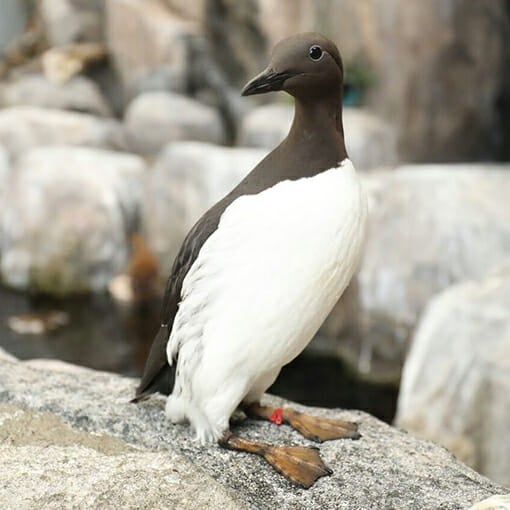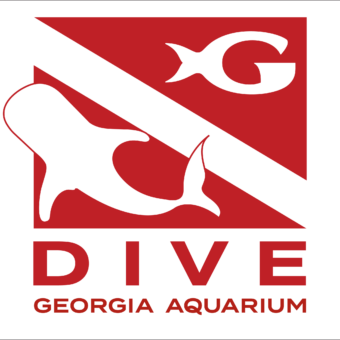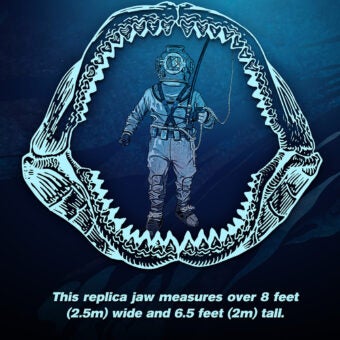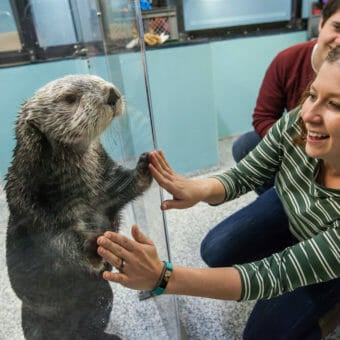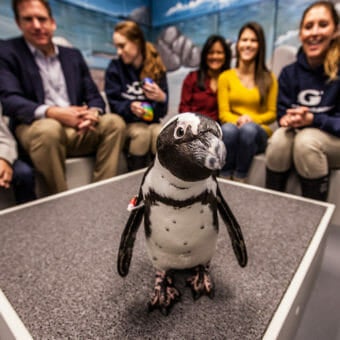-
Size
15-17 inches (38-43 cm) -
Diet
Fish, crustaceans, polychaetes (marine worms) and squid -
Range
Northern Pacific -
Habitat
Along rocky, coastal cliffs and offshore islands
Physical Characteristics
Size
- A large member of the auk, or alcid, family.
- Common length of 15-17 inches (38-43 cm).
- Wingspan of 25-28 inches (64-71 cm).
Appearance
- Coloration is dark brown to black on the head, neck and back with a white underside. Orange to red legs and feet.
- Long, dark, slender and pointed bill and grey to black feet and legs.
- Winter plumage is similar except with white on the cheeks and throat.
- Males and females are similar in appearance.
- Juveniles appear similar to adults except smaller and with darker heads.
- Chicks are downy and blackish brown on top with a white underside.
Animal Fun Fact
The common murre molts twice a year, and has distinctive summer plumage and winter plumage.
Diet / Feeding
- Consists mostly of a wide variety of fishes, including herring, cod, capelin, sand lance, and haddock, as well as various crustaceans, polychaetes (marine worms) and squid.
- Captures prey by surface diving. May dive up to 150 feet (46 m) in pursuit of prey. May remain underwater for up to one minute at a time.
Range / Habitat
- Occurs in the northern Pacific from Alaska to central California and the northern Atlantic from Labrador to Nova Scotia.
- A pelagic seabird. Spends much of the year offshore; returns to the coast in the summer to nest and raise chicks.
- During the breeding season, found along rocky coastal cliffs and offshore islands.
- During the non-breeding season, ranges over adjacent waters usually only to the edge of the continental shelf.
Reproduction & Growth
- Nests in large breeding colonies on steep coastal cliffs or offshore islands are often mixed with other auks and seabirds.
- Forms a monogamous pair.
- Colonies are typically so dense that as many as 20 pairs may be found in an area of only 10 square feet (1 sq. m).
- Courtship displays include bowing, billing and preening.
- Eggs are laid from May-July in the Atlantic and March-July in the Pacific.
- Each pair produces one pear-shaped egg, which is laid directly on the ground with no nesting material. The egg’s shape prevents it from rolling off the edge.
- If an egg is lost early on, it may be replaced in 14-16 days.
- Eggs vary in color from white to green, blue or brown and may have different colored spots or speckles. These color variations help parents recognize their egg.
- Both parents take turns incubating the egg, which hatches after about 28-34 days.
- Chick fledges at about 18-25 days, at which point it flutters down to the sea, where it will continue to be fed by parents until it is able to fly at about 50-70 days of age.
- Reaches reproductive maturity at 4-6 years of age.
Conservation Status
- “Least Concern” on the IUCN Red List.
- The population is suspected to be in decline due to predation by invasive species and habitat destruction.
Additional Information
Taxonomy
- Murres, like guillemots and puffins, belong to a group of seabirds known as auks, or alcids.
- Auks are medium-sized seabirds with long bodies, short tails, small wings and short legs set far back on the body.
- Auks occur mostly in the Northern Hemisphere. While often compared to penguins, which occur in the Southern Hemisphere, the similarities auks share with penguins are due to convergent evolution, whereby organisms not closely related develop similar traits as a result of having to adapt to similar environments.
- Unlike the penguin, murres and other alcids can fly, although they mostly swim while at sea.
Swimming/Flight Behavior
- Murres and other alcids are well adapted for life on the ocean. They have short, strong wings and legs set far back on the body, making them excellent swimmers and divers. However, these same traits make alcids clumsy on land and make taking flight more challenging.
- Swims by using its strong wings to “fly” underwater.
- Must beat wings rapidly in order to take off and fly. May run along the surface of the water or dive from cliffs to build momentum for take-off.
Communication
- Vocalization is typically a soft purring, although, at breeding colonies, croaks, growls and moans are also heard.
- Average lifespan is about 26 years.



